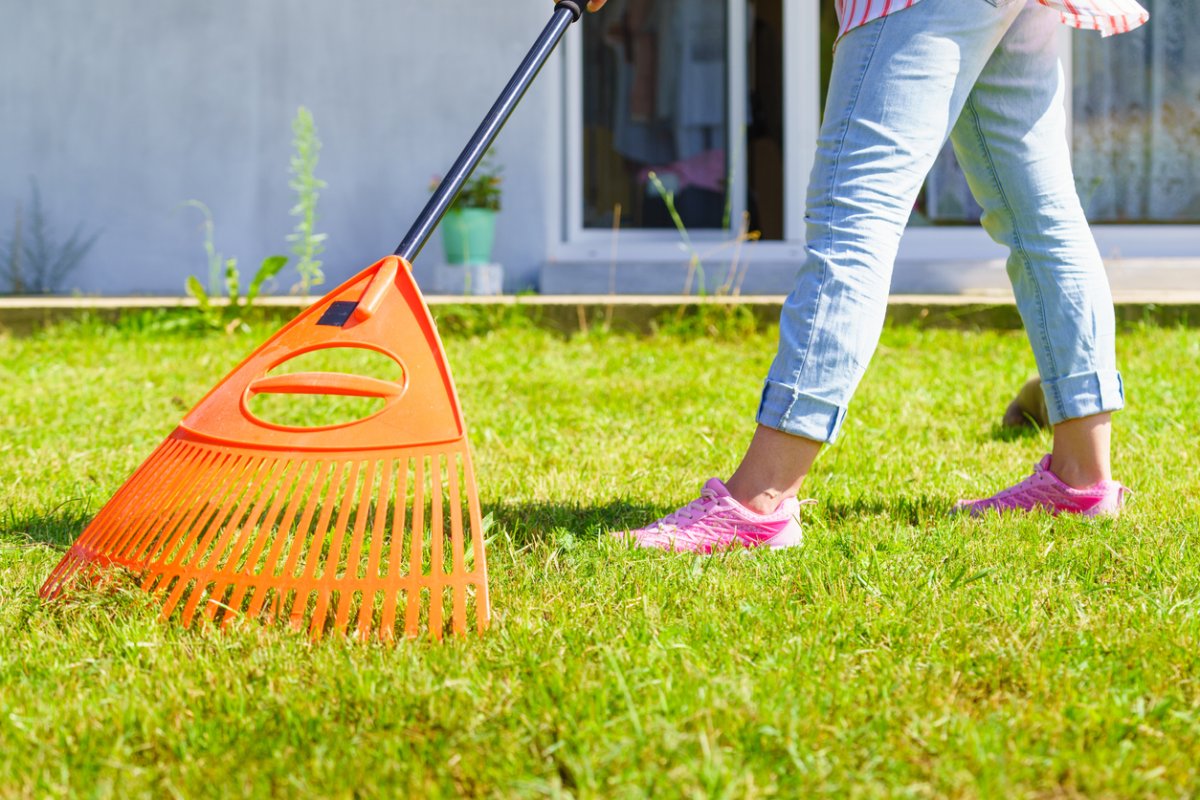

We may earn revenue from the products available on this page and participate in affiliate programs. Learn More ›
Grass can be great—when it’s like lush, lovely carpeting beneath your feet. But it may be time to bid farewell to traditional grass lawns. They require copious amounts of water, fertilizers, and pesticides, leading to significant water waste and pollution of local ecosystems. In fact, according to the Environmental Protection Agency, lawn maintenance accounts for nearly one-third of all residential water use, totaling nearly 9 billion gallons per day. It’s estimated that in 2023, Americans will spend roughly $176 billion maintaining their lawns. By eliminating grass, homeowners can conserve dwindling water resources and reduce harmful chemical runoff. Additionally, grass-free yards, such as those with native plants, rock gardens, or wildflower meadows, provide essential habitats for wildlife. If you’d like to pass on grass and remove your lawn, explore these effective ways to get the job done.
Why Kill Your Grass?
Killing grass and transforming your outdoor space into a grass-free area can be a practical choice for these reasons:
- It eliminates the time-consuming (and costly) maintenance that comes along with traditional lawns
- It reduces water consumption
- It curbs the use of harmful fertilizers and pesticides, promoting a healthier environment for people and wildlife.
Before You Begin
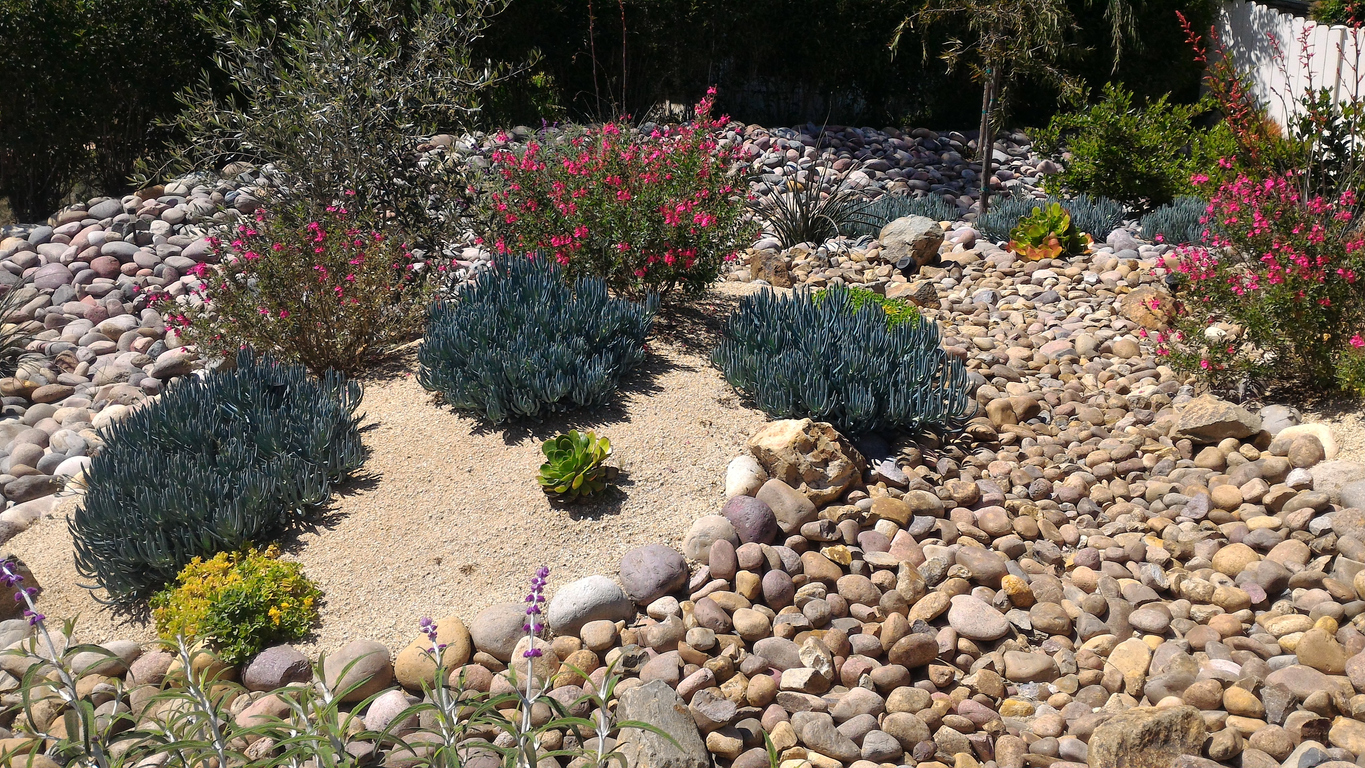
Before learning how to kill grass permanently, there are a few things to keep in mind. You’ll want to assess your local climate and soil conditions to determine which grass alternatives will work best in your area. Native and adapted plants are terrific, eco-friendly grass replacements.
Next, you’ll want to investigate whether your homeowners’ association or municipality restricts the use of certain equipment or herbicides, should you choose to go that route, that you might use to kill the grass. HOAs may also regulate the types of plantings with which you can replace the grass. Some insist that that tidy rectangle of grass remain in place, meaning you’ll have to ask for an exemption or abandon your plans if you don’t want to end up in hot water with the HOA.
Finally, you will also want to plan your budget carefully. Transitioning to a grass-free yard may require a hefty deposit, as well as ongoing investment.
The 9 Most Effective Ways to Kill Grass
1. Solarization

If you’re wondering how to kill grass naturally, consider solarization, a natural, inexpensive lawn removal method that uses the power of the sun. This chemical-free method is a good choice for those with patience, as it can take several weeks or even months to completely kill the grass. It is, however, a relatively affordable option if you’re willing to give the process time to work. Here’s how to do it:
- Check the weather forecast for a string of sunny days.
- Mow the grass as close to the ground as possible.
- Water the lawn to the point of saturation
- Cover the grass promptly with clear plastic sheeting, held in place at the edges with bricks, cement blocks, planters—anything heavy enough to keep the plastic from blowing away.
The heat of the sun does the rest, effectively “sweating” or “cooking” your grass to death in 6 to 8 weeks.
2. Smothering
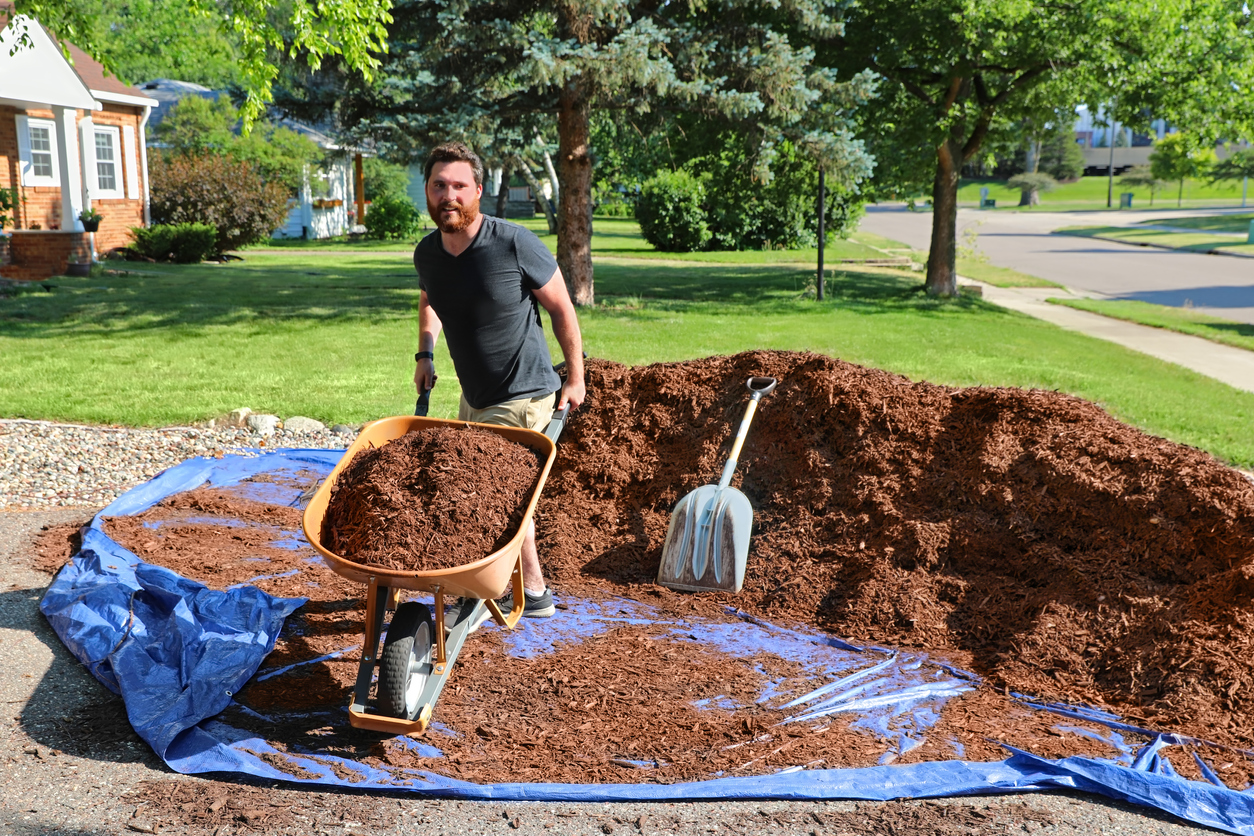
Can’t depend on the sun? Try smothering, also known as layering or composting, to lose your lawn. This method is especially popular for banishing a small lawn or a section of a larger one. Killing grass by smothering it is an inexpensive and chemical-free method of weed control, but it is a time-consuming process that can require several months to fully kill the grass. Here’s how to do it:
- Begin with a close mow.
- Cover the patch with several layers of overlapped newspaper or cardboard.
- Wet it all down and top with a layer of grass clippings or mulch.
The technique prevents light from getting through, so photosynthesis can’t occur. Unwanted grass will be gone in about 8 weeks and, if curb appeal is a concern, the mulched area may be considered less unsightly than plastic sheeting. Plus, as the paper breaks down, it boosts soil quality, which is great if you intend to plant in the area.
3. Digging

If you don’t want to wait weeks, you can banish grass with basic garden tools, plus some elbow grease, in one fell swoop. Just take care to locate any underground utilities or irrigation equipment before any digging begins. While removing grass manually allows for precise removal and immediate results, it can be physically demanding and difficult to remove all grass roots. Here’s how to do it:
- If you have a small grassy area, break it up with a hand tiller; for a larger lawn, you’d be wise to rent a heavy-duty tiller.
- Once it’s been thoroughly tilled, use a shovel to scoop up large sections of grass and root-infested soil.
- After all the grass is gone, go back over the area with a rake to round up any rocks that may be present.
RELATED: How to Till a Garden Without a Tiller: 10 Solutions That Work
4. Scalping
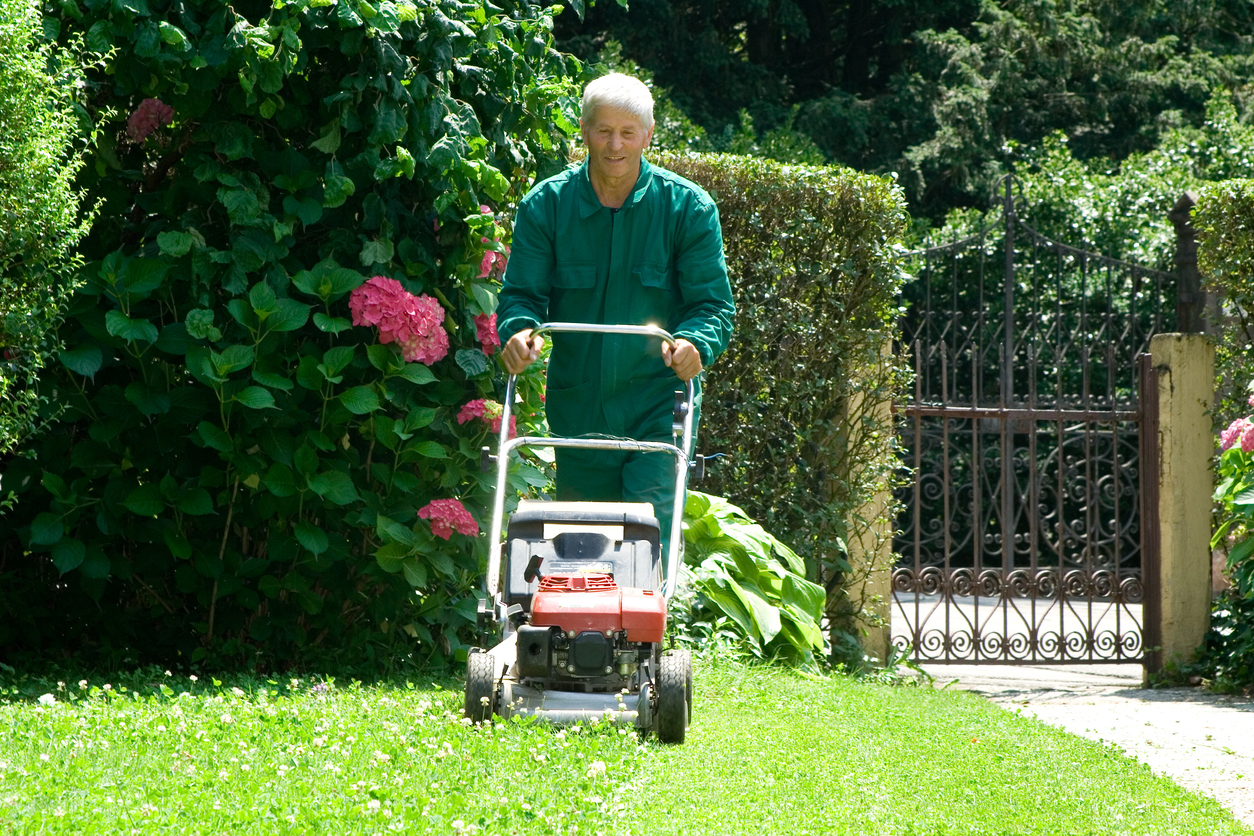
Scalping is an effective method for killing grass that involves cutting it extremely short, almost to the ground. This weakens the grass and over time, can lead to its death.Scalping removes most of the grass and exposes the soil surface, leaving the yard quite unattractive, so you probably should have a replanting strategy ready to implement fairly immediately. Here’s how to scalp your lawn:
- Time it right. You want to make sure you don’t scalp your lawn too early in the year when there is still frost on the ground, but you also don’t want to scalp your lawn when your grass is actively growing. Assess local weather patterns to determine the best timing.
- Set your lawnmower to its lowest cutting height possible.
- Start mowing the lawn, cutting the grass as close to the soil surface as you can without damaging the mower blades or hitting the soil.
- After scalping the lawn, leave the clippings to block sunlight and airflow to the surface of the soil, which can aid in killing the grass roots.
5. Boiling
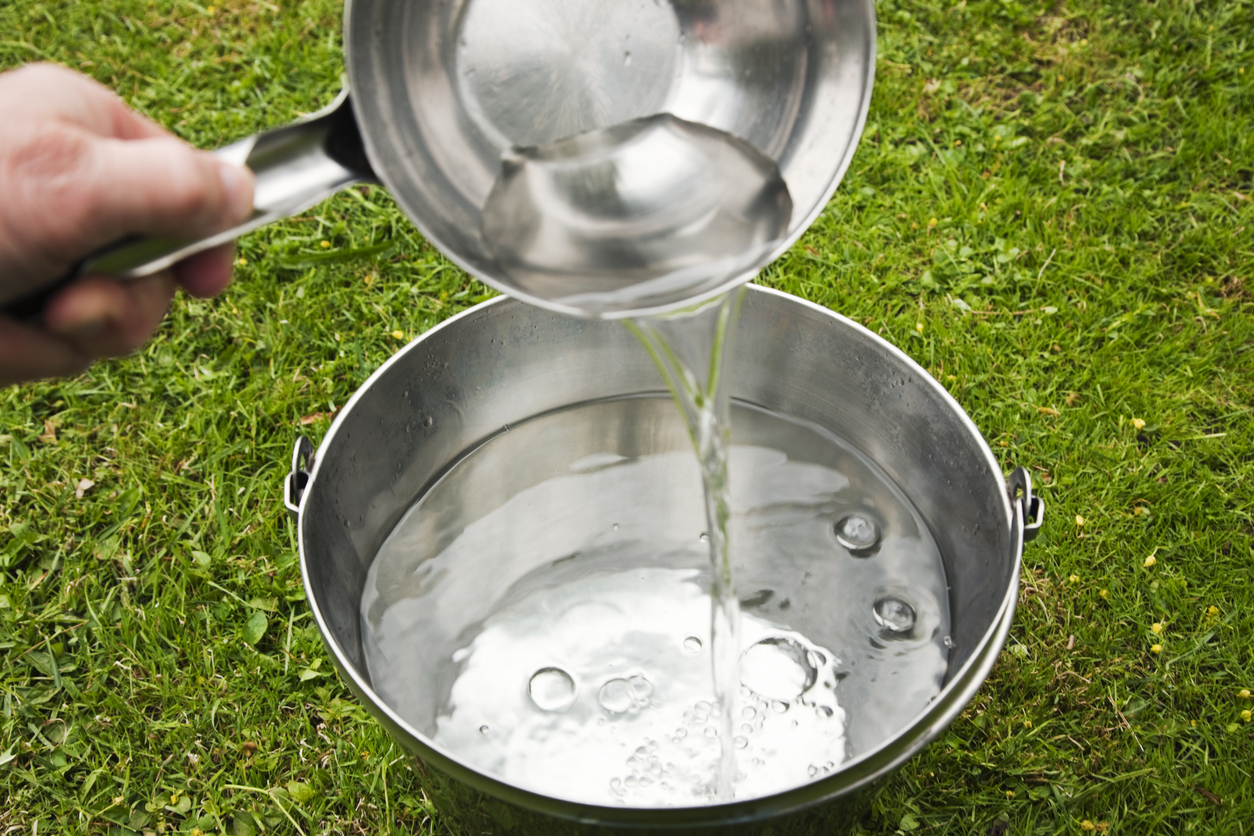
If you don’t have much grass to get rid of, boiling water can be an effective and environmentally friendly method of killing it without resorting to chemicals. The high temperature of the water disrupts cellular processes in the grass, causing it to wither and die. To try this method, simply boil water in a large pot and carefully pour it directly over the grass, thoroughly soaking the soil. You want to make sure that the roots are impacted, as well as the above-ground blades. Of course, you’ll want to avoid splashing or burning yourself during the process.
6. Burning
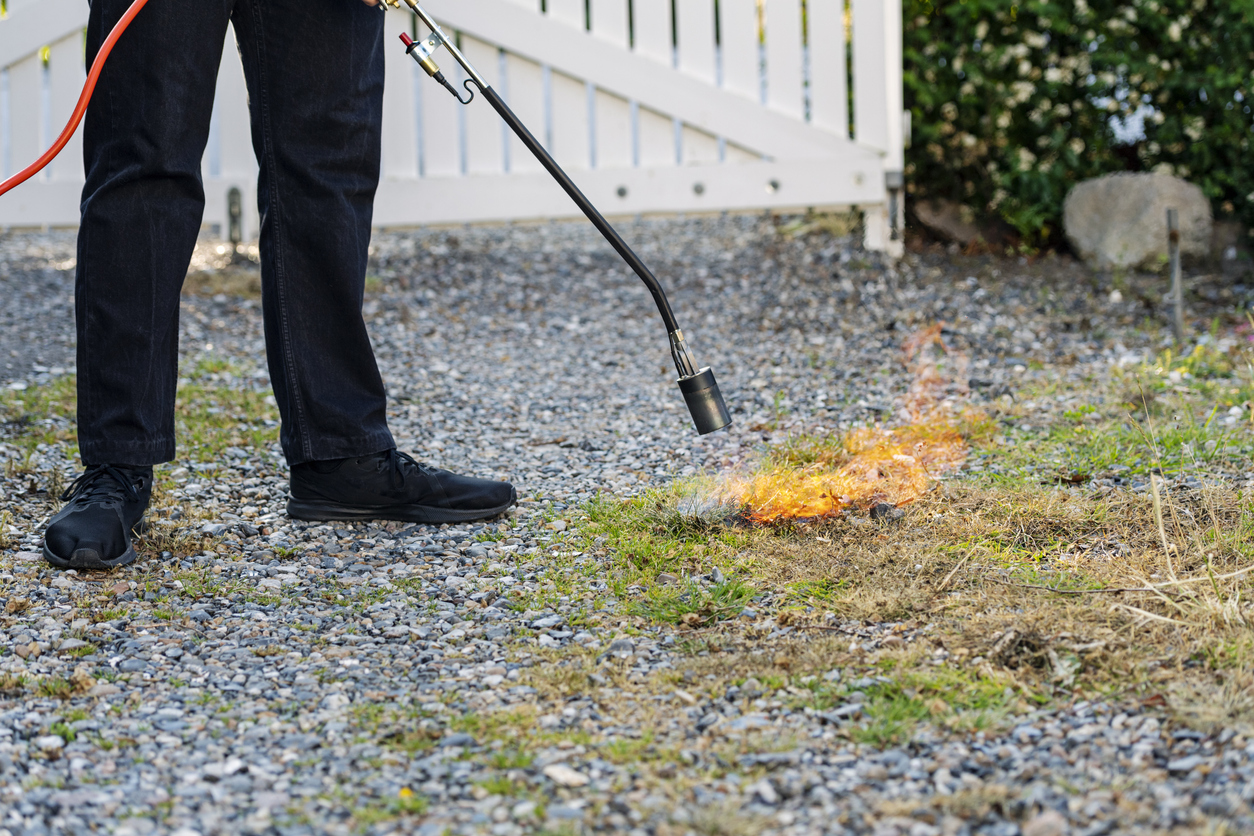
Using a weed torch is an effective method for eliminating grass, specifically crabgrass, without resorting to chemicals. The intense heat from the torch scorches the crabgrass, causing it to burn and die. To use this method, hold the weed torch just above the grass and pass it over the plant until it turns brown. Proceed with caution to avoid burning yourself or nearby vegetation; have a hose or fire extinguisher at the ready in case the flames get away from you.
7. Baking Soda
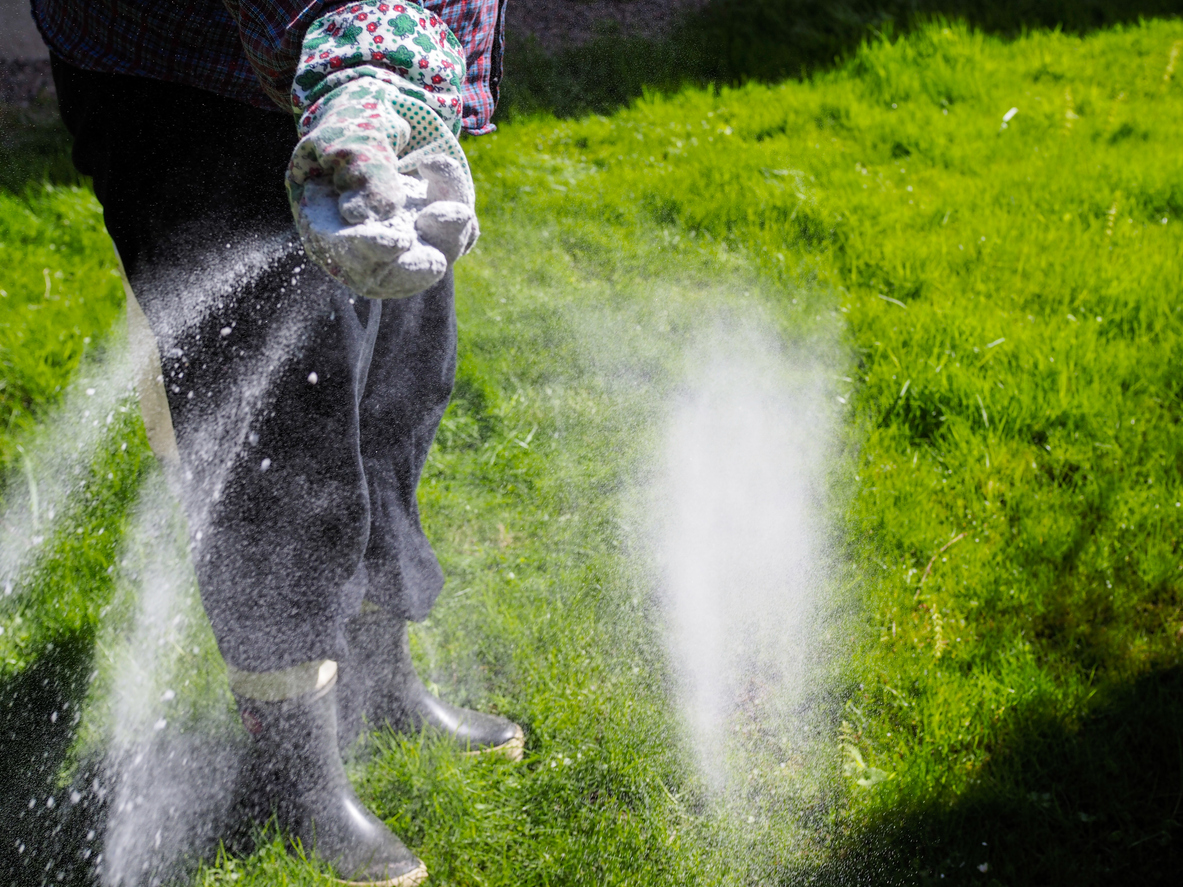
Sprinkling baking soda directly onto the grass causes a pH imbalance in the soil, hindering the grass’s ability to absorb nutrients and water. This will eventually cause the grass to die. Simply wet the lawn and generously sprinkle baking soda onto the grass. You’ll probably need to reapply it a few times until the grass is completely dead. If your objective is to replant the area after the grass is dead, think carefully about whether the method makes the most sense, because dramatically altering the soil’s pH will impact what you can plant in that area in the future.
8. Dish Soap
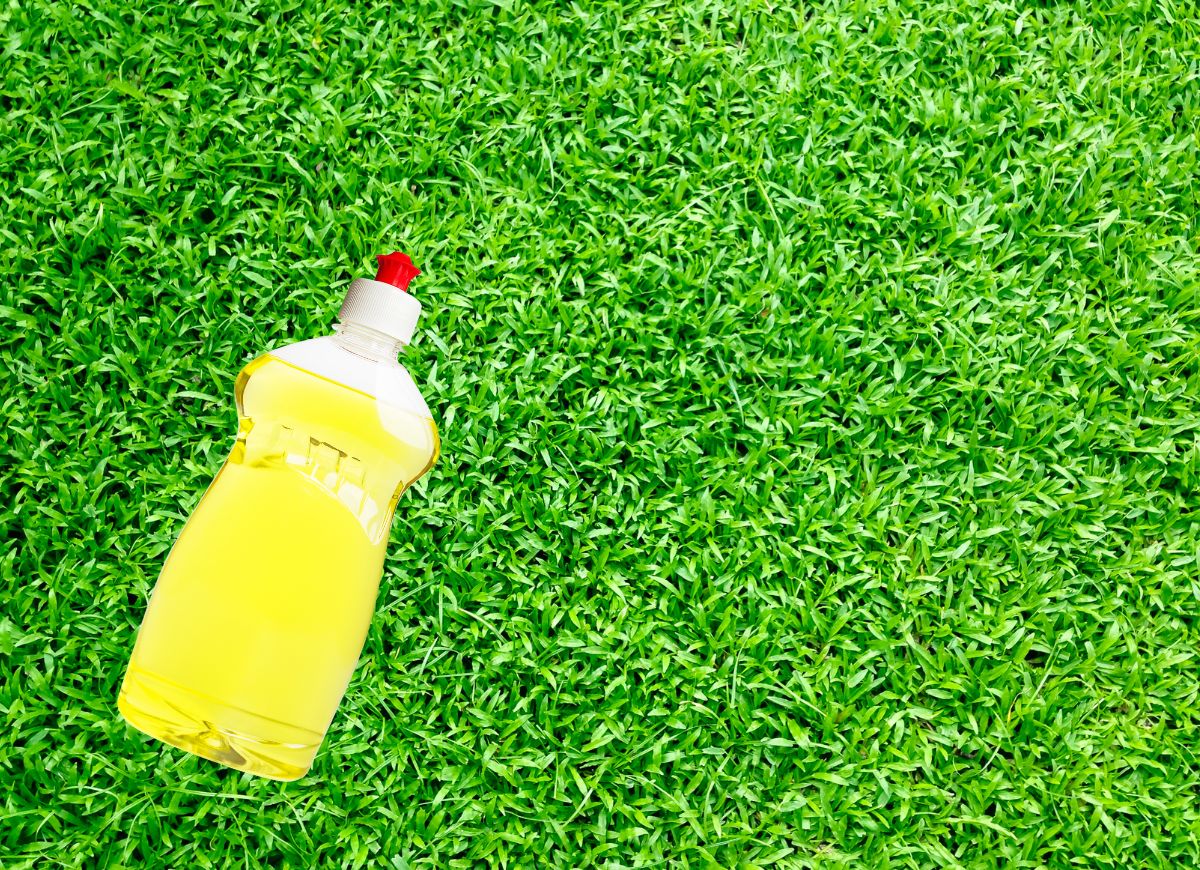
Dish soap is a common household item that can be an effective solution for killing grass. Simply mix 1 to 2 tablespoons of dish soap with a gallon of water and thoroughly coat the area via a spray bottle or by pouring the mixture onto the grass.
Other pantry solutions you may have heard of include using salt or vinegar to kill grass. We don’t recommend these methods, as they have been shown to be a temporary fix, as the grass and weeds often grow back.
9. Herbicides
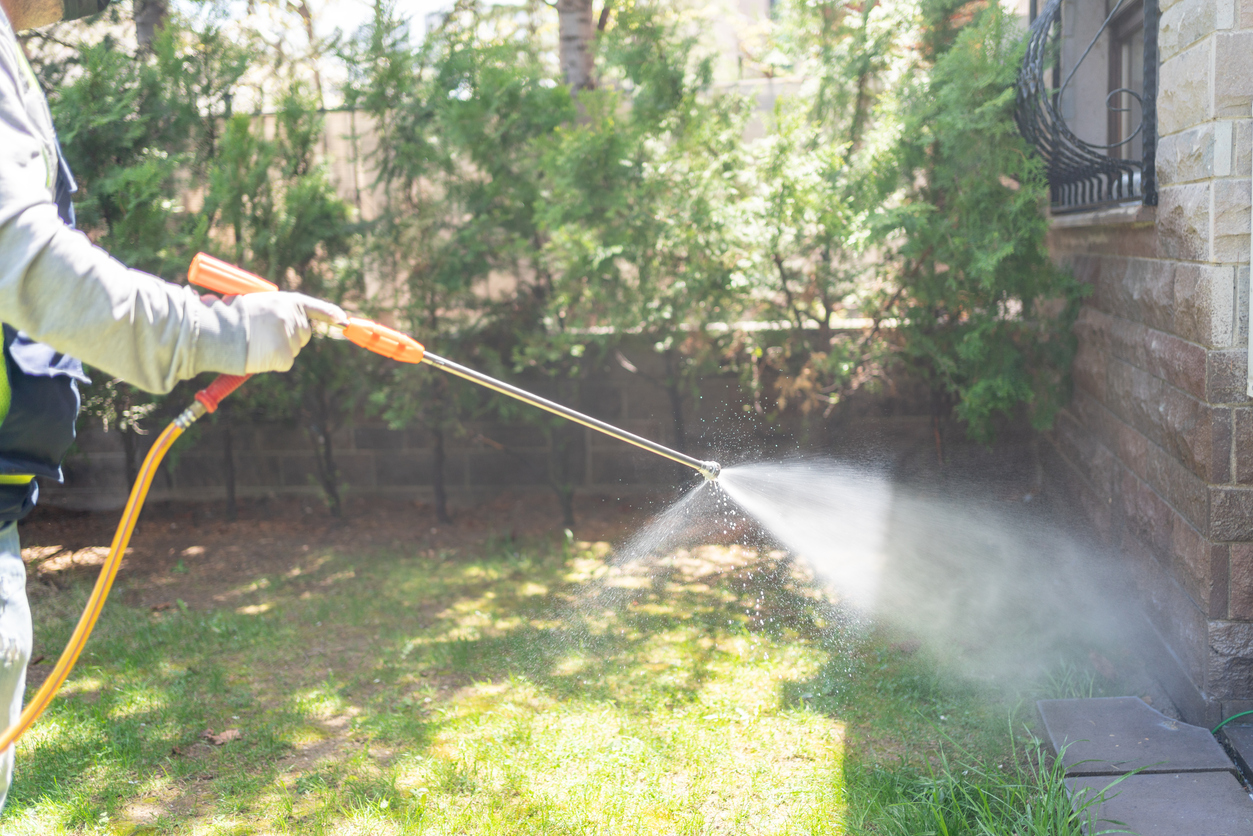
Herbicides are highly effective in killing grass and can provide rapid results, but they might require repeated applications to get the job done. The reason we don’t recommend them is that they can also negatively impact the environment if they’re not used properly. Consult a pro at your local nursery for advice about which herbicide to use, and be sure to follow directions carefully to ensure safety.
RELATED: The Government Paid Me to Remove My Lawn—Here’s What Happened
Killing Grass: Small Patches vs. Large Lawns
Before making a decision as to which grass-killing method will work best for your lawn, be sure to take into account the size of your grassed area.
For smaller patches of grass, manual removal by digging, pulling, or using a garden tool can be the most effective method for killing grass as it allows for precise removal and can minimize the impact on surrounding areas. And while we typically prefer to avoid chemical herbicides due to their potentially harmful effects on the environment, spot treatments with specific herbicides can be useful for targeting small areas with sparse grass.
Large areas of turf may require more effort and time to effectively eliminate, and may require tools like tillers and lawnmowers to thoroughly and efficiently remove unwanted grass.
Killing vast areas of grass may be challenging for a homeowner. You may want to consider hiring a professional lawn care service for more efficient grass removal.
RELATED: Drought-Tolerant Landscaping: Top Tips for a Hardy, Low-Maintenance Yard
How to Properly Dispose of Grass
You’ve killed your grass: Now what should you do with it? One of the best ways to get rid of your killed grass is to compost it, that is, if the grass hasn’t been killed with chemicals. Simply add the grass clippings to your compost pile, combining it with other organic materials like food scraps, yard waste, and leaves. This will break down the grass and turn it into nutrient-rich compost for your garden.
Final Thoughts
The above grass-removal methods each come with their own set of advantages and disadvantages. Chemical herbicides offer fast results but must be used with caution to avoid harm to your family, and the environment. Natural alternatives like boiling water, baking soda, and dish soap are safer options but may require more patience and repeated applications. Ultimately, the most suitable approach depends on your specific circumstances. Once your grass is gone, start planning whether you’re going to be landscaping with stones or other grass alternatives.
